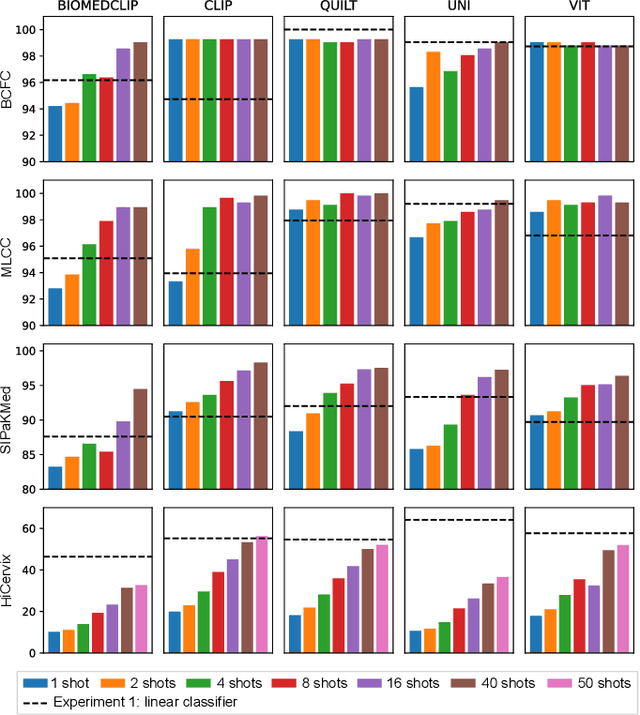Karim El Khoury
Exploring Foundation Models Fine-Tuning for Cytology Classification
Nov 22, 2024


Abstract:Cytology slides are essential tools in diagnosing and staging cancer, but their analysis is time-consuming and costly. Foundation models have shown great potential to assist in these tasks. In this paper, we explore how existing foundation models can be applied to cytological classification. More particularly, we focus on low-rank adaptation, a parameter-efficient fine-tuning method suited to few-shot learning. We evaluated five foundation models across four cytological classification datasets. Our results demonstrate that fine-tuning the pre-trained backbones with LoRA significantly improves model performance compared to fine-tuning only the classifier head, achieving state-of-the-art results on both simple and complex classification tasks while requiring fewer data samples.
Enhancing Remote Sensing Vision-Language Models for Zero-Shot Scene Classification
Sep 01, 2024


Abstract:Vision-Language Models for remote sensing have shown promising uses thanks to their extensive pretraining. However, their conventional usage in zero-shot scene classification methods still involves dividing large images into patches and making independent predictions, i.e., inductive inference, thereby limiting their effectiveness by ignoring valuable contextual information. Our approach tackles this issue by utilizing initial predictions based on text prompting and patch affinity relationships from the image encoder to enhance zero-shot capabilities through transductive inference, all without the need for supervision and at a minor computational cost. Experiments on 10 remote sensing datasets with state-of-the-art Vision-Language Models demonstrate significant accuracy improvements over inductive zero-shot classification. Our source code is publicly available on Github: https://github.com/elkhouryk/RS-TransCLIP
Streamlined Hybrid Annotation Framework using Scalable Codestream for Bandwidth-Restricted UAV Object Detection
Feb 07, 2024Abstract:Emergency response missions depend on the fast relay of visual information, a task to which unmanned aerial vehicles are well adapted. However, the effective use of unmanned aerial vehicles is often compromised by bandwidth limitations that impede fast data transmission, thereby delaying the quick decision-making necessary in emergency situations. To address these challenges, this paper presents a streamlined hybrid annotation framework that utilizes the JPEG 2000 compression algorithm to facilitate object detection under limited bandwidth. The proposed framework employs a fine-tuned deep learning network for initial image annotation at lower resolutions and uses JPEG 2000's scalable codestream to selectively enhance the image resolution in critical areas that require human expert annotation. We show that our proposed hybrid framework reduces the response time by a factor of 34 in emergency situations compared to a baseline approach.
 Add to Chrome
Add to Chrome Add to Firefox
Add to Firefox Add to Edge
Add to Edge